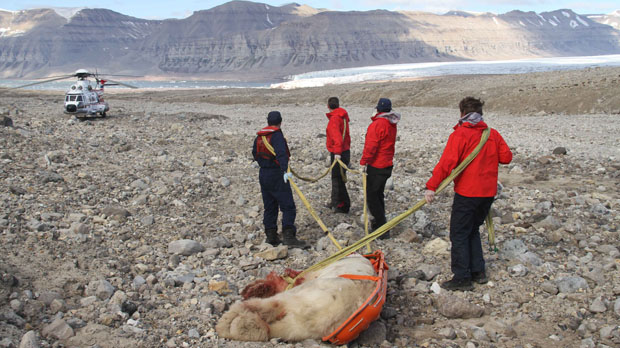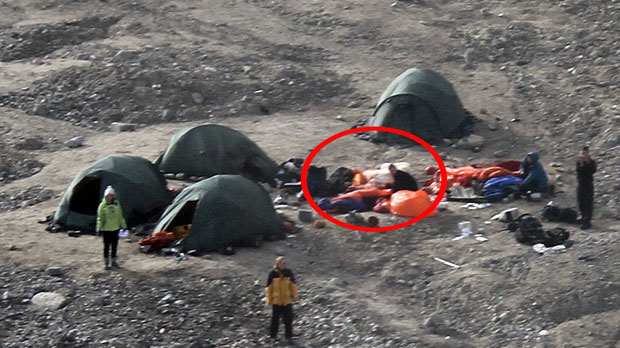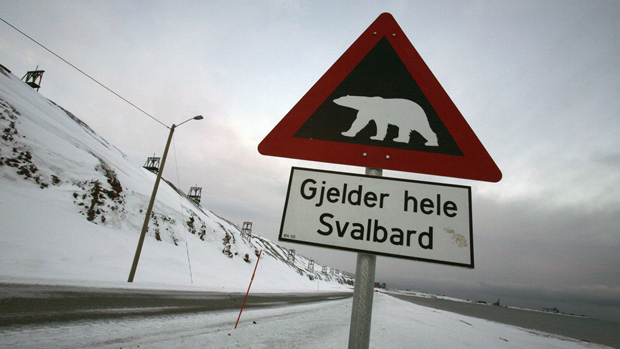Questions raised over polar bear trip wire protection
The 17-year-old boy killed by a polar bear in Norway has been named as Horatio Chapple, as questions are raised over the anti-polar bear trip wires placed around the camp.

In a short statement the chairman of the British Schools Exploring Society (BSES), Edward Watson, said: “Having spoken to the family, we are now able to advise that the young explorer who died on our expedition this morning is Horatio Chapple.
“We and the Norwegian authorities are currently establishing the full circumstances of his tragic death and will not be releasing this until we have discussed this fully with the family.”
Questions have been raised about the effectiveness of security measures at the campsite designed to keep out polar bears.
Earlier, the father of one of the other boys on the trip told reporters that anti-bear trip wires placed around his son’s campsite seemingly failed to stop the animal from entering the camp.
Terry Flinders spoke to channelonline.tv and described the moments when he first heard the news his son Patrick had been injured in the bear attack.
Patrick, a Jersey teenager, was on a campsite with Horatio Chapple and 12 others as part of the British Schools Exploring Society (BSES), 25 miles west of the town of Longyearbyen in the Svalbard islands when a polar bear attacked them this morning.
According to Mr Flinders the bear managed to somehow avoid setting off the trip wire traps, which are designed to fire bullets into the air and scare bears away.
Two expedition leaders then tried to stop its progress but were attacked themselves. Mr Flinders says the bear then entered his son’s tent, and attacked Patrick, wounded another boy and killed Horatio.
Mr Flinders said: “What they have round the tents are trip wires with bullets in to stop the polar bears trying to get in – if they trip it bullets go up in the air and scares them away.
“This time it didn’t happen apparently and one of the other chaps came out with a rifle and tried to kill the polar bear and didn’t do it.
“And then the leader tried to kill the polar bear, but just before he killed him apparently, the bear mauled him and he’s really, really bad.
“The bear got into the tent where Patrick was and two friends, and he just, for some reason grabbed hold of the other boy and just killed him.”
The bear got into the tent where Patrick was and two friends, and he just, for some reason grabbed hold of the other boy and just killed him. Terry Flinders
The office of the Svalbard governor also raised the issue of the trip wire precautionary measures.
Spokeswoman Liv Asta Odegaard said that campers usually laid down trip wires around the tents when they went to sleep, but she was unsure whether the trip worked had worked properly in this instance.
“It is not unusual to camp here, but it is necessary to carry weapons,” she said, adding police are now investigating the death.
The BSES expedition confirmed that four people have been wounded in the attack, and said they were extremely saddened at the news of Horatio’s death.
It is reported that the injured trip leaders were Michael Reid, Andrew Ruck and the fourth wounded boy is Scott Smith.
Two of them have been seriously injured and have been evacuated to Tromsø for treatment at the hospital. Doctors report that all the injured are awake and are not in a life threatening condition.
The bear was killed at the campsite by huntsmen.

Polar bear blog
The expedition was well aware of the threat of polar bears. One member, Marcus Wright, wrote on the BSES blog a week ago that his group had seen a polar bear a mile away across a fjord.
In an entry called “Sea Ice and Polar Bears!” in the expedition’s blog on 27 July, Marcus Wright described their sighting of a “p.bear”:
“I think we must have all dreamed of polar bears because the next day we were eagerly waiting for the ice floes to break up so we could move on to base camp.
“There was a p.bear sighting across the fjord about a mile away.”
He went on: “We encountered another p.bear floating on the ice, this time we were lucky enough to borrow a kind Norwegian guides’ telescope to see it properly.
“After that experience I can say for sure that everyone dreamed of p.bears that night.”
Another expedition member Kyle Gouveia, who had to leave the group early, described the preparations the group took included rifle training.
“When we got up there we had rifle training so we were all well armed with it and also we learnt about the protection from polar bears – like bear flares around your camps which are like empty shotgun rounds that shoot off and make loud noises so the polar bear runs away.”
The BSES Expeditions is a registered charity and has close links with the Duke of Edinburgh’s Award scheme.
It says its expeditions are “a potent combination of personal development through adventurous activity and environmental research in remote wilderness areas”.

-
Latest news
-
FactCheck: why has Humza Yousaf resigned as Scotland’s First Minister?

-
500 years of music: exhibition challenges when Black British music began5m

-
‘We’ve got to do more’, says World Food Programme’s Palestine Director3m

-
Palestinian president expects Israel will go into Rafah ‘in coming days’1m

-
Rishi Sunak refuses to rule out July general election, again3m

-




